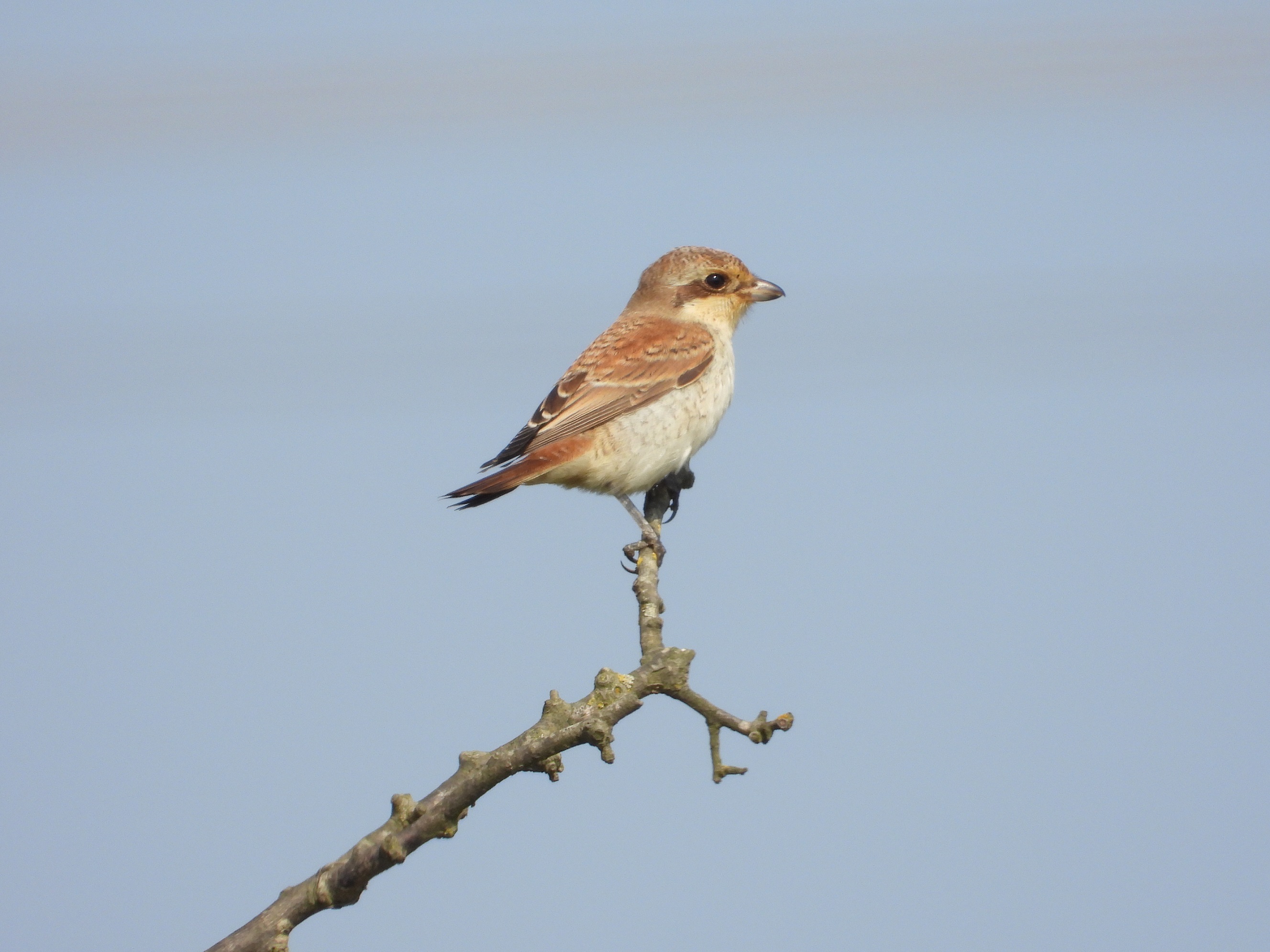
BirdTrack migration blog (13–20 September)
Be the first to commentThere was another fall of classic drift migrants, with the BirdTrack reporting rates of Pied Flycatcher, Spotted Flycatcher, Redstart and Wheatear seeing large spikes.
North Norfolk saw one of its best fall days in recent years on Friday 6 September, with some sites recording counts of over 100 of each of these species. Of course as mentioned last week, the weekend coincided with the 11th Spurn Migration Festival. This was a great event for anyone interested in migration, with various walks and talks for everyone. The favourable winds provided a near perfect weekend of birds, to help showcase the event. Alongside more of the aforementioned species, highlights for our BTO Migration walk participants were Ortolan Bunting, Red-backed Shrike, Wryneck, Pallid Harrier and a juvenile Honey-buzzard.
Other festival notable sightings included an adult male Red-breasted Flycatcher, Greenish Warbler, Barred Warbler, Icterine Warbler, Bee-eater, Dotterel, Quail and Yellow-browed Warbler. While the seawatchers reported Sooty, Balearic and Manx Shearwater, Storm Petrel, Great and Arctic Skua and Puffin.
There were also some good sightings away from Spurn which included a Wilson’s Phalarope at Marshside RSPB in Lancashire from 5–8 September, and a Semipalmated Sandpiper at Marazion, Cornwall on 4 September. On North Ronaldsay, Orkney, there was the earliest ever British autumn sighting of Dusky Warbler on 7 September and a day later a Brown Booby sighting was reported from Sandwich Bay, Kent. Also, there was a notable arrival of Ferruginous Duck with records from four sites across England from 4–10 September.
Looking forward to the week ahead
The next few days look very cold for the time of the year with winds coming from the north. This may encourage some waders such as Golden Plover to move south. Large flocks of this species can start to be seen at this time of year around estuaries, before they move out to lowlands and farmland. This early in autumn, a few birds may still have retained some of their summer plumage so look out for any still showing a black breast and belly. There is also a chance that some early Fieldfare or Redwing could move or maybe a Brambling or two, so it could be worth familiarising yourself with their unmistakable “te-ehp” flight call.
By the weekend the weather will be split across the country with high pressure dominating over the south of the UK bringing dry, fine weather and light winds meaning that there may be some good visible migration of Meadow Pipit. BirdTrack records for this species peak from mid September into October. Last year on 14 September there was a peak count of 14,670 at Gibraltar Point, Lincolnshire, so the change in the weather from cold northerly to light warm south-westerly may get them on the move.
The northern half of the UK looks much windier and wetter with brisk westerly winds, so seawatching will again probably be most productive with birds pushed from the mid Atlantic towards Ireland and the west coast of Scotland. Of course there could still be some birds that were displaced in the easterly winds that have been waiting for the weather to turn warmer and calmer to be found. So maybe a Red-flanked Bluetail or a Sykes’s Warbler could turn up somewhere yet, but that is probably far too wishful thinking.
So whatever the weather where you are this week, I am sure there will be some migration to witness and record on your BirdTrack lists.
Send us your records with BirdTrack
Help us track the departures and arrivals of migrating birds by submitting your sightings to BirdTrack.
It’s quick and easy, and signing up to BirdTrack also allows you to explore trends, reports and recent records in your area.
Find out more









Share this page